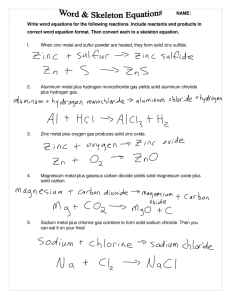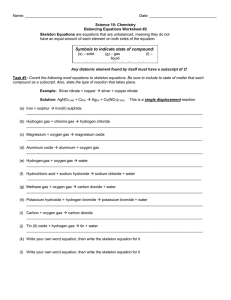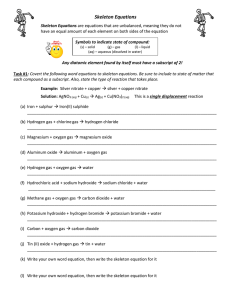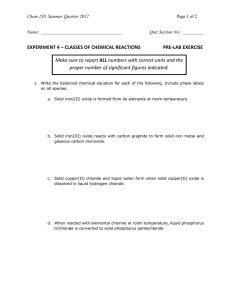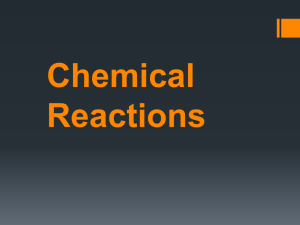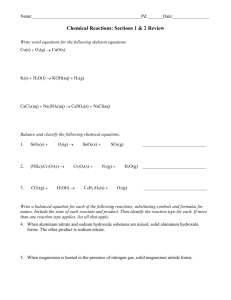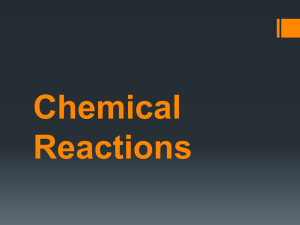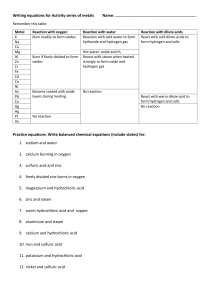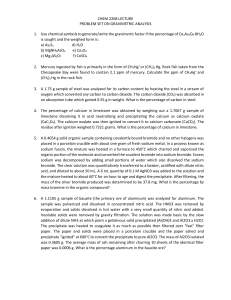word equations - MrBuntainSpace
advertisement
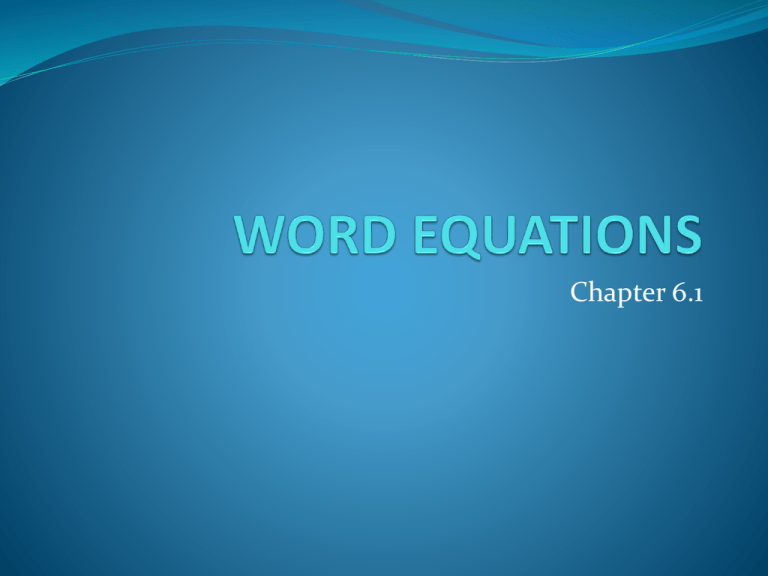
Chapter 6.1 Chemical Reactions A reaction happens when two or more molecules interact and the molecules change and a new chemical is produced. That's it. What molecules are they? How do they interact? What happens? The possibilities are infinite. When you are trying to understand reactions, imagine that you are working with the atoms. Imagine the building blocks are right in front of you on the table, instead of billions of reactions in your beaker. How do we know a chemical reaction has taken place? 1. 2. 3. 4. 5. 6. 7. A new colour appears Heat or light is given off, change in temp Bubbles of gas are formed A solid(precipitate) forms in a liquid The change is difficult to reverse A change in odour A new chemical has been formed How can you describe the range of reactions? Using word equations are a convenient way for chemists to understand these reactions. A word equation is one way of representing a chemical reaction. It tells you what reacts and what is produced. This is an efficient way to describe chemical changes, to help chemists recognize patterns, and to predict the products of a chemical reaction. Why do we use word equations? “When the grey metal magnesium was picked up with a pair of tongs and heated in the working flame of the Bunsen burner a chemical reaction occurred. A reaction with the oxygen caused a bright white light to be produced and a crumbly white solid called magnesium oxide was formed.” Being descriptive is important to know what actually happened but it is often very time consuming. This works better: Magnesium + Oxygen Magnesium Oxide Word equations are written in a certain format. Names of what is reacting Names of what is produced ( reactants ) ( products ) Multiple reactants and products are separated by plus (+) signs and the arrows show the change from before the reaction to after the reaction. Reactant 1 + Reactant 2 product 1 + product 2 EXAMPLES Wood + Spark Fabric + thread + buttons Fire + smoke + heat shirt The iron in a car reacts with oxygen to produce iron (III) oxide, what we call rust. Iron + oxygen iron(III) oxide EXAMPLES We can also change this word equation into formula equation. ( skeleton equation ) Fe + O2 Fe2O3 TRY THIS Write a word and formula equation for the following: 1) Zinc is added to hydrogen monochloride and this produces hydrogen gas and zinc chloride. Answer: Zinc + hydrogen monochloride Zn + HCl hydrogen gas + zinc chloride H2 + ZnCl2 TRY THIS 2) Sodium reacts with calcium bromide to make calcium and sodium bromide Answer: Sodium + calcium bromide Na + CaBr2 Ca + NaBr calcium + sodium bromide TRY THIS 3) Carbon dioxide and water are produced when methane is added to oxygen. Answer: Methane + oxygen CH4 + O2 carbon dioxide + water CO2 + H2O Class Work Complete 6.1 & 6.5 Chemical Equations Worksheet *do not attempt to balance the equation as we will cover that tomorrow. HOMEWORK DO QUESTIONS 2 AND 3 ON PAGE 219

